Choosing the best walking equipment for you
If you feel insecure when you walk, experience weakness or pain, or have had a fall, then you may be considering getting a walking aid.
The information below discusses the types of walking aids available
Walking equipment is usually used either as part of a rehabilitation programme if you are recovering from an injury or operation, or as a long-term aid to mobility if you have ongoing difficulty with walking.
The rehabilitation process is a gradual progression towards independent and unassisted walking. In these cases you usually start by using one kind of walking aid to give you confidence before progressing to another type of walking aid. The ultimate aim of a rehabilitation programme is for you to regain as much independence and safety as possible in your walking and preferably getting back to how you walked before your injury or operation.
Sometimes complete recovery is not possible, or you may have an illness or disability that permanently affects your legs, balance or coordination. In these situations, mobility equipment may be required for long-term use.
To ensure that the appropriate device is selected, your needs, your lifestyle and your home environment should be assessed.
Walking equipment may perform one or more functions including:
- offer greater stability and balance by providing a wider support base
- aiding your walking pattern in terms of speed and evenness of stride. The equipment may also help maintain an upright body posture
- increasing your confidence in your walking ability
- weight redistribution. Some of the weight carried through the legs when walking is transferred through the arms of the frame or stick as it is leant on for support. This may help reduce pain in the back and the joints, muscles and ligaments in the lower limbs.
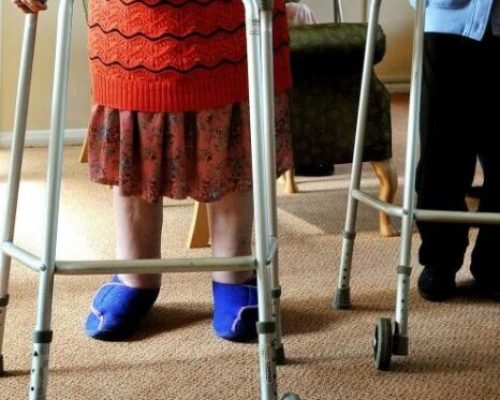
Using your walking aid safely
The correct use of a walking aid is not always as straightforward as it seems. Walking equipment may improve your mobility but if an inappropriate walking device is used, if incorrect techniques are adopted, or if the device is not suitable for a particular environment, your independence and safety may be jeopardised.
A physiotherapist or occupational therapist should be able to give you appropriate teaching and advice when you are assessed.
To recap on how you should use it- The stick should be held in the opposite hand to the leg with any problem. The natural pattern of walking is to swing the opposite arm with leg. So using the stick in the opposite arm means you will have a more natural gait.
Reducing the risk of falls
There are a number of actions that you can take to minimise your risk of a fall whilst using a walking aid.
- In the Home- Remove all loose rugs and clutter from the floor. Keep your access routes around the house clear at all times
- Stairs- If you have stairs in your house and use a walking aid, obtain a second one and keep one upstairs and one downstairs. Do NOT attempt to take a walking frame up and down stairs
- Standing from a chair– Do not attempt to use a walking frame or stick to rise from a chair. They are not stable enough. You should always push up with your hands on the arms of the chair, leaning well forward and only take hold of the frame or stick once you are standing.
- Wet floors- Walking equipment should not be used in wet floor areas. If you need to access a wet room or shower area, ask the advice of the OT who will suggest where. grab rails can be installed.
- Footwear- Footwear should be well fitted, secure on your feet and supportive as you walk.
- Maintaining your walking aid- It is vital that your walking aid is kept in good condition. Make sure the rubber end is in good condition.
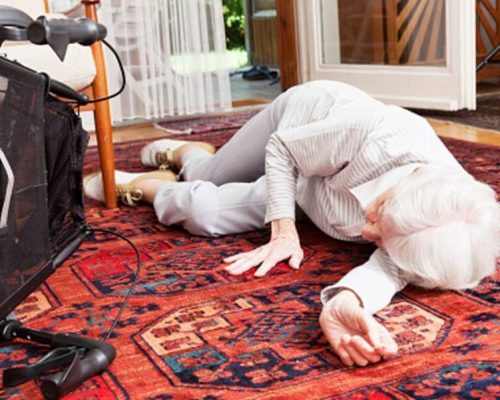
Walking sticks, tripods and quadrupods
As traditional walking sticks only have a single point of contact with the floor they tend to be used by those with moderately reduced balance.
Wooden sticks
Cut to the correct length. They are not as adaptable as metal sticks.
Metal sticks
Stronger than wooden walking sticks and are usually adjustable.
Folding sticks
These are lightweight metal sticks with sectioned shafts that enable them to be folded up Walking sticks with a seat
These are particularly useful for people who need to rest periodically – perhaps with breathing difficulties or a heart condition – or for people who find it difficult to stand whilst waiting in a queue. They are not recommended for people who need to take a lot of weight through the stick, as the addition of a seat alters the balance of the stick.
The weight of stick seats and the amount of strength needed to open and close the seat varies. The height of many of these sticks can be adjusted.
The seat size is often small and seat height varies between the models. The lower the seat, the more difficult it becomes to stand up. Most do not provide back support or armrests to push up from.
Those with three or four legs provide a broader base of support and are therefore more stable to sit on than the shooting stick type, which have only one leg. Seat sticks with a single point base must have a rubber ferrule. Traditional style shooting sticks with a single point and plate base, instead of a ferrule, do not provide sufficient stability.
The maximum user weight tolerated by stick seats varies according to their design. You are advised to check the manufacturer’s details for weight tolerance. It is also advisable to discuss the suitability if this type of stick with your GP or physiotherapist.
Walking stick handle shapes
There are a variety of different shaped handles to choose from so find one that is comfortable for you.
Handle shapes are:
1. Crook which can be hooked over your arm when not in use. Not always as comfortable as T shape
2. T shape- can add a wrist strap so you can hold it when not using it.
3. Swan necked- can help if you need more stability
4. Fischer or contoured handle sticks- anatomically shaped tp spread the weight over the palm. Great for permanent users or people with arthritic hands
Tripods and Quadrupods
These walking aids have a walking stick-style shaft and a 3-4 point base. They are therefore freestanding and are more stable than standard walking sticks. They are usually used singly rather than in pairs.
If used in pairs, models with a narrow base occupy less floor space and are therefore more practical. They are more difficult to use on stairs than standard walking sticks (Elmamoun and Mulley, 2007).
All tripods and quadrupods are made of metal, usually aluminium or steel, and have a telescopic mechanism for adjusting height using spring-loaded catches. It is very important to have the tripod or quadrupod at the correct height for use.
As with other walking aids, the usual measurement to take is the distance between the wrist crease and the ground.
Tripods and quadrupods are available in narrow and wide based versions, the wide base offering greater stability. All can be used right or left-handed; the handgrip can be rotated through 180 degrees so that the spread of the base is away from the user.
Some quadrupods incorporate an extension above the handgrip that terminates in an elbow cuff, similar to the cuff found on elbow crutches. This gives added security, by retaining the forearm in a position immediately above the handgrip.
How to check the correct height for walking aids
It is very important to have the walking stick at the correct height for use. If this is incorrect then the support will not be adequate and may cause discomfort.
If the walking stick is too high, this will result in you raising your shoulders which reduces your balance and comfort.
The best method of checking the height is to stand in your normal footwear with your arms hanging relaxed with a slight natural bend at the elbow (flexed at 15 degrees). Then take a measurement from the wrist crease/ big knobble on the wrist bone to the ground. This should be the height of your walking aid.
Check the height from time to time-your height and posture may change over time so it is worth checking occasionally. If large changes are needed do this slowly in increments so that you can adjust the way you walk slowly. If your health care professional has set the stick high for you this may be for a specific reason, so do not change it without asking.
Crutches
You should always get advice from a healthcare professional before choosing or using crutches. They are designed to be used in pairs and you need good co-ordination to use them correctly.
Occasionally one crutch is used on its own but this should only be done under the guidance of a physiotherapist.
Elbow crutches are most commonly used. These may be single or double adjustable- so either floor-to-handgrip height and the distance between the cuff and the handgrip are adjustable or Single adjustable elbow crutches allow floor-to-handgrip height adjustment only. Standard and anatomically moulded handgrips are available.
For those with problems with the hand or wrist the other option is a forearm crutch with a gutter arm rest.
Handgrip
Some crutches can have contoured handles, shaped to follow the contours of the hand and spreading the pressure over a wider area of the palm, for more comfortable use. A gel handgrip can also help to improve comfort.
The correct height for crutches
Crutches must be at the correct height for use. Just like a stick you should stand with correct footwear on and the height of the handle should be set at a height level with the protruding bone at the side of the wrist.
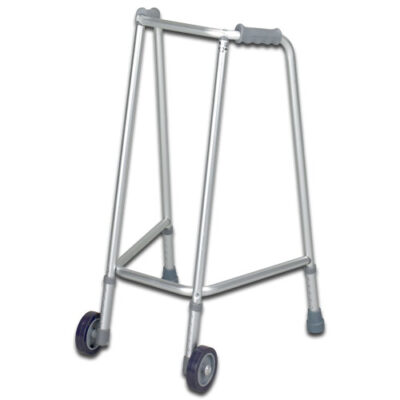
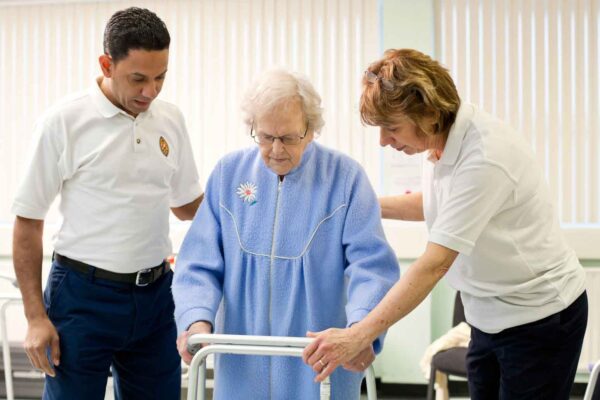
Walking frames and wheeled frames
As walking frames have more points of contact with the floor, they tend to be used by those with greater balance problems and/or weak legs. A walking stick can off-load 25% of the user’s weight compared to a frame which can transfer 64% of the user’s weight through the arms. This weight re-distribution from legs to arms can also help reduce leg pain.
Types of frames
Zimmer frames
Usually made of metal of aluminium or steel with rubber ferrules on each leg.S.ome models have contoured hand grips. They can come in fixed height or adjustable versions.
Although walking frames are useful because they provide a large area of support, they do not allow the user to walk using the normal flowing walking pattern. The user has to keep stopping and starting as the frame is picked up, moved forwards and stepped into. This means they may not be suitable for you if you get tired quickly or have difficulty starting movements (this is often a symptom of Parkinson’s disease)
When buying a frame it is worth considering the size of the frame base for your house as some may be too wide to go through small doorways. Frames with four legs that are spread widely apart will be the most stable but may be difficult to get through doorways. If the doorway is particularly narrow, the user may have to walk through sideways.
Narrow four-legged frames are not as stable for the user.
Folding pulpit frames
A folding frame can easily be stored within the home if it does not need to be used all the time. It also makes it easier to transport in a car boot. Folding frames with four legs have hinged sides, which can be folded flat against the front of the frame when catches are released.
There are a variety of catch mechanisms available to allow the frame to fold. It is worth checking that you can operate the catch easily before you buy.
Gutter frames
These have forearm troughs or gutters which allow you to bear weight through your forearms rather than your hands. These are good for those with wrist and hand problems.
The troughs and handgrips can be adjusted to find the most suitable and comfortable position.
Wheeled walking frames and rollators
Frames with two wheels can be used in two ways:
- the frame is pushed with the rear ferrules lifted fractionally off the ground or they are allowed to glide across the floor surface, allowing the person to adopt a more fluent walking pattern
- alternatively, it is used like a non-mobile pulpit frame, except that the frame does not have to be lifted up to move it forwards – the person pushes it instead.
This frame is held stationary while the user steps forwards.
Wheeled pulpit frames
Wheeled walking frames are basically the same as standard pulpit frames but instead of ferrules they have small wheels on the front legs. It may be possible to exchange the ferrules on a standard, non-mobile frame for wheeled extensions. The small wheels make them more suitable for indoor use but, as the wheels do not swivel, they can be difficult to manoeuvre.
Wheeled frames are usually chosen over non-wheeled frames when balance, instead of reduced weight-bearing ability, is the main concern They are also useful for people who find it difficult to use a traditional frame as they make a more continuous walking pattern possible, and do not need to be lifted clear off the ground to move forwards. The wheels on these frames do not pivot around a corner, so the frame needs to be lifted when turning.
These frames should not be used for people who put significant weight through the frame, as the frame can unintentionally move forward with a pushing down/forward movement. They can also be hazardous to individuals with a Parkinsonian gait (characterised by small shuffling steps which accelerate) so consult with your healthcare professional.
High or forearm walkers may be wheeled or non-wheeled.
Three-wheeled rollators (Delta frames)
Triangular frames are sometimes called ‘Delta’ or ‘tri-wheeler frames’. They have a single front swivel castor and two uni-directional rear wheels. The larger wheels make them suitable for use outdoors. You may find them more manoeuvrable than four wheeled walkers, although not as stable. As they are so manoeuvrable, the use of the brakes when the person stops walking is important for safety. Like two wheeled rollators they may allow you to adopt a more flowing walking pattern than a non-wheeled walking frame. The height of the pushing handles can be adjusted.
As with all mobility equipment, it is essential that triangular walkers are inspected regularly with particular attention paid to the locking mechanism (usually consisting of a cross brace), which maintains the rollator in an open position. If the folding mechanism is not properly locked the frame may fold unexpectedly
Four-wheeled rollators
Four wheeled walkers, when used appropriately, will allow the person to adopt a more fluent walking pattern. Large wheels and/or large swivelling castors facilitate travel. However, they may be too mobile for people who need to lean or push against the frame for support – the frame may run away from them. The size of these walkers make them more suitable for outside use, but with adequate space, can be used inside.
Although many find their rollators very useful, some find them difficult to handle getting on and off buses. Studies have suggested that users of rollators can walk faster and use less energy than users of zimmer frames.
The correct height for walking frames
It is very important to have the frame at the correct height for use.
- If the frame is too high, you may find it difficult to straighten your elbows sufficiently and may not take enough body weight through your arms
- If the frame is too low, it will encourage you to be bent over in a poor posture. However, a physiotherapist may deliberately set up a frame at a low height for people who tend to fall backwards – this will encourage them to lean forwards
- When being measured for the height of your walking frame wear appropriate and supportive footwear.
Generally, to ensure that the pushing handles are in the best position for weight bearing, the height of the handgrips should be at the level of the wrist bone when the user’s elbows are very slightly bent (at an angle of about 15 degree flexion)
Some models are available in a number of fixed heights – the nearest suitable height should be chosen. Others have telescopic handles, with spring-loaded catches, so that their height can be more finely adjusted.
How to choose a walking frame or rollator
Brakes on rollators
It is very important to ensure that a fully mobile frame has brakes and that they can be operated quickly and easily by the user, so that he/she always feels in control. These are the most common types:
- Pressure brakes –Most zimmer frames have these whereby downward pressure causes the frame to brake. This may not be suitable for users who cannot push down heavily enough on the frame or for heavier users who may apply the brakes permanently
- Cable brakes like bicycle brakes and require a squeeze action to apply them so they may not be suitable if you have weak or painful hands. Check you are able to operate them
- Locking brakes Many brake lever handles can be pushed down to lock the brakes in the on position so that the grip does not have to be continuously maintained. This safety feature is important when using a frame with a built-in seat
Weight
Heavy frames tend to be more stable but may be difficult for some people to lift.
Wheels
Small solid wheels or castors are really only suitable for use indoors and may require more effort to push over deep pile carpet or carpet bars than larger wheels
Pneumatic wheels will require pumping up from time to time, but provide more suspension than solid rubber tyres.
Swivel vs fixed wheels or castors
Frames with castors that swivel may be more manoeuvrable, but fixed wheels can help to make it easier to walk in a straight line. Larger wheels are more suitable for uneven/outdoor terrain
Some studies have suggested that four wheeled walkers are more stable than three wheeled.
Seats-
These enable you to take a rest if you need whilst walking. You apply the brakes, turn around and sits down. Some rollators have a small backrest for support when sitting and armrests to help when sitting and standing.
Check on the size and the height of the seat as some are very narrow or very low. A seat does increase the weight of the frame.
The frame must have the brakes on before you sit down. It is always safer to park the rollator against a wall before applying the brakes and sitting down.
If you are purchasing your own rollator, compare the stability of different models when sitting down on their seat with an experienced member of staff. Factors such as the rollators weight, the material of the wheels and how far the seat is from the braked wheels will all affect its stability when you are sitting.
Accessories for walking aids
Wrist loops
These can be attached to the top of a walking stick and the loop can be placed around the person’s wrist to keep the stick at hand.
Comfort handgrips
These can be fitted over the top of standard walking sticks and crutches to make them more comfortable to hold. They may be made of fleece, foam, rubber, terry towelling or gel.
Bags, baskets and trays
A bag, basket or tray can be attached to some walking frames. Trays can be clipped onto the top of the frame and folded forward or detached when not in use. They are more useful on wheeled frames which do not need to be picked up to be moved.
Care should be taken when using accessories that attach to the front of a walking aid as they will alter the balance of the device and may make it less stable. Using specially designed net bags, apron style bags with pockets and wire baskets which have been designed to better maintain the balance of the walking aid is vital. Bags should not be attached to walking sticks or crutches.

Trolleys
These are not meant to be a walking aid, but if your main difficulty is carrying items such as meals and hot drinks between rooms, then you may wish to try out a household trolley. Household trolleys are sometimes available through local authority social services departments but depending on availability and eligibility criteria you may need to buy this yourself. They are not suitable for outside use.
Trolleys are available with one or two shelves; the bottom shelf is sometimes recessed to give greater space for your legs when stepping forwards. Some trolleys have removable trays which may help when transferring items or cleaning the tray.
The size of wheel will affect how smoothly the trolley travels over carpets and thresholds. Generally, larger wheels cope better than smaller wheels over higher thresholds and thick pile carpets. Front fixed wheels facilitate travel in a straight line; swivel wheels improve manoeuvrability in tight spaces and around corners.
Shopping trolleys
These are not walking aids, but if you are steady on your feet but lack walking stamina (for example a breathing difficulty or a heart condition, which may be made worse by carrying heavy loads) you may benefit from a shopping trolley that incorporates a seat. Some models fold so that they can be stored discreetly.
Assessing what you need
Difficulties in walking may be due to a variety of reasons including balance, movement and joint/skeletal problems. It is useful to understand the difficulties that you are experiencing, as it will influence the type of walking aid that is best for you.
If you are experiencing difficulties whilst walking, you feel insecure, or you have fallen, you are advised to see your GP initially. There may be an undiagnosed reason for your mobility problems. If there is, it is important that any illness, whether temporary or longer-term, is identified and treated where possible. Your GP will be able to refer you for a physiotherapy assessment if required, or you can organise a private assessment for yourself.
Physiotherapists are available in hospitals and community settings, through health and social services. The Chartered Society of Physiotherapy has some online advice on how to find a physio.
Walking aids for particular conditions
If you are experiencing walking difficulties because you have a particular condition, for example Parkinson’s, Motor Neurone Disease or Multiple Sclerosis, or you have had a stroke, you are advised to talk to your physiotherapist. Sometimes the use of a walking aid may only be recommended at a certain stage of the condition, or with a particular method of use. The contact details for various organisations is given at the end of this factsheet.
If you have a condition which affects your hands, and thereby your grip, you will need to consider the type of handles on the walking aids. There are some designs which may be better for you.
Supply and provision
Following an assessment, the physiotherapist may provide you with advice about techniques, exercises and/or footwear, rather than a walking aid. If a walking aid is required, they will usually provide you with one, or you may be advised on equipment to purchase yourself.
Things to consider when obtaining a walking aid
It is vital that you obtain the right walking aid for you and your circumstances. You also need to know how to use the walking aid properly and safely. A physiotherapist can ensure that this happens. There are some key factors that need to be considered:
- Your body frame, e.g. your height, shape and weight. If you are a particularly large, tall or short person, you will need to ensure that the equipment you choose is suitable for your weight and height
- Your condition and the way that it affects you, e.g. does your condition give you pain or do you get very tired?
- Your gait – the way you walk. How is your balance, your strength and ability to weight-bear?
- How will your condition and its effects change over time?
- Does your condition affect your hands and your ability to grip?
- What activities do you want or need to be able to do, e.g. are you working or based at home?
- The environments that you spend most time in – your home, college, work or social setting. Do you need to manage the stairs or access a small bathroom/toilet?
- Will you need to carry the walking aid in the car or take it on public transport?
As with any repeated movement pattern, the long-term use of a walking aid can cause changes in your gait, posture, balance and muscle strength. These can all affect your ability to carry out certain tasks. It is important that:
- you are given the correct walking aid for you
- it is adjusted to the correct height for you
- you are taught its correct use
- you also know how to counteract any possible long-term change it may make to your body, for example exercises and your positioning when at rest.
It is a good idea to have a second walking aid to keep one upstairs and one downstairs at home.
Private physiotherapist
If you wish to request a private appointment with a physiotherapist, you can search an online registry held by the Chartered Society of Physiotherapists.
Physio First represents the interests of self-employed private physiotherapists. You can also search for a private physio via Physio First’s website.
If you do contact a private physiotherapist (or occupational therapist) make sure they are registered with the Health and Care Professions Council (HCPC). The HCPC is responsible for the conduct, performance and ethical behaviour of its registrants and any occupational therapist or physiotherapist must be registered with them in order to practise. Visit the HCPC website to check the registration status of a physiotherapist.
Private purchase
If you decide to buy equipment privately it is best to try and compare the different ranges of walking aids first. You may have an equipment demonstration centre near you that you can visit, where you will receive impartial advice to help choose appropriately. If you know what you need in terms of your condition and your mobility, do also consider the practical aspects of your environment/s, storage, transport etc.
Contact details for your nearest equipment demonstration centre can be found here.
Look for retailers who are members of the British Healthcare Trades Association (BHTA), which means that they adhere to the organisation’s code of practice.
Funding sources
Charitable trusts may sometimes provide funding for equipment. A useful resource is Turn2Us, a website that allows you to search for organisations that give grants, including for equipment and other services. You can refine and filter your search by specific health issues such as ‘physical disability’ or ‘ageing’. Charities will only give awards in accordance with a predetermined criteria, so it is important that you carefully select the trusts you apply to.
VAT relief
If you are disabled, terminally ill, or have a diagnosed longterm condition, you may be able to claim VAT relief on the purchases, thus reducing the cost. Ask the supplying company or check their website for further information.
There are many companies that sell these products.
For a 3 wheeled walker one suggestion is the attached
Maintaining your walking equipment
All walking equipment should be checked regularly for signs of wear and tear. Particularly vulnerable parts include the ferrules, which are the rubber cap placed on the end of the walking stick or frame to provide grip and stability on the floor surface. The ferrules must be replaced if the slip-resistant rings or bobbles on their underside lose their definition, or if the rubber shows signs of cracking. Replacement ferrules are usually available from the issuing department, for example the hospital physiotherapy department. Some chemists stock them and they are easily available online. You will need to measure the diameter of the ‘leg’ of your walking aid to ensure that you get the correct size of ferrule.
Equipment that is height adjustable can show signs of stress at the height setting after prolonged use. Handgrips can also become worn. Although certain handgrips can be replaced, they are less easy to obtain. It may be easier to replace the whole walking aid.
If you feel that your walking device is structurally no longer safe to use, inform the issuing department which may provide you with a replacement. If you have bought your walking device privately, then you are responsible for maintenance and upkeep.
Disable living foundation-
You can contact helpline which is open Monday to Friday from 10am to 4pm.
Tel: 0300 999 0004
Alternatively, you may wish to contact us via email: info@dlf.org.uk or by letter: DLF, 34 Chatfield Road, Wandsworth, London SW11 3SE
To help us give you a concise and informative reply, please provide us with as much detail as possible, including information on the difficulties you are having and any solutions you have considered, such as equipment ideas.
Another source of advice is a local disability store where you can try out a range of options.
Chartered Society of Physiotherapy (CSP)
14 Bedford Row, London WC1R 4ED
Tel: 020 7306 6666
Fax: 020 7306 6611
Website: www.csp.org.uk
Find a chartered physiotherapist near you using a directory of private practitioners at Physio2u.
Sources- Disabled living foundation
Chartered society of physiotherapists


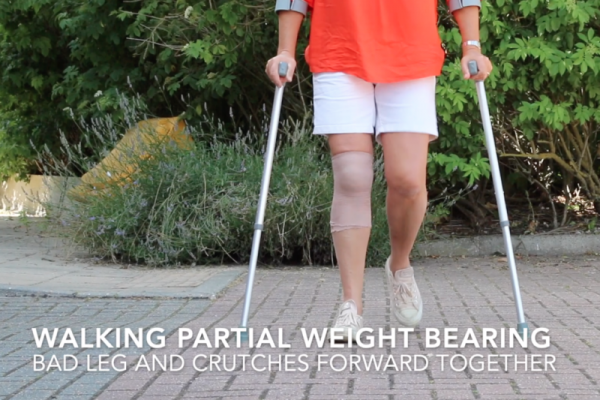
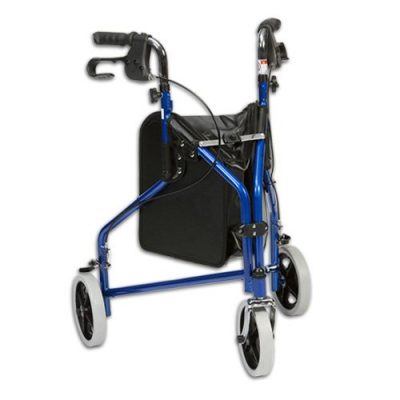
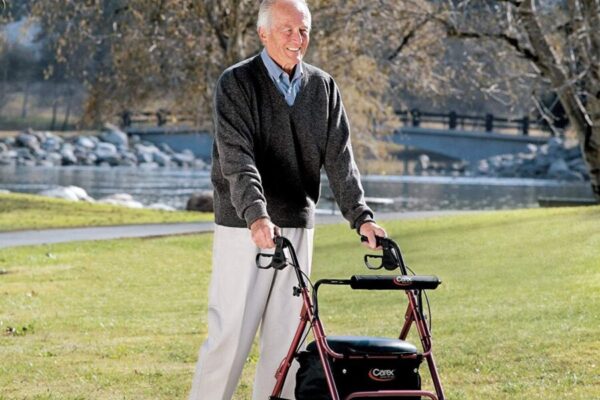
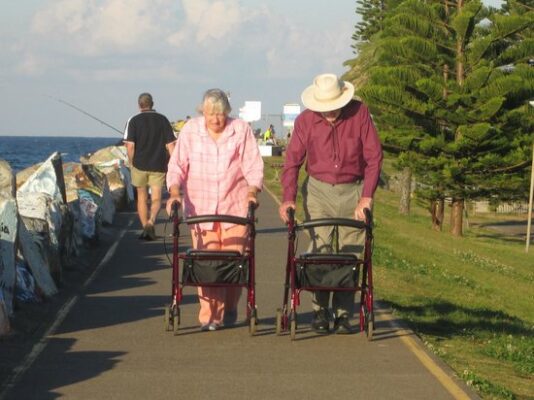
Pingback: Falls in the home – Myhealth4life